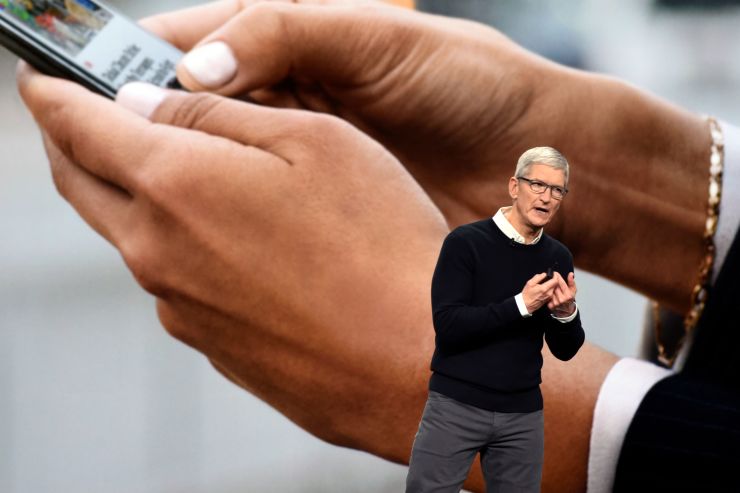
Apple CEO Tim Cook began Monday’s highly anticipated event at the Steve Jobs Theater by defining the word “services.” The conceit was to lay out a new vision for how to think about Apple.
If Apple Version 1 was the Macintosh computer, and Apple Version 2 was mobile hardware from the iPod and iPhone through the Apple Watch, then Apple Version 3 would include a variety of subscription services with recurring revenue.
That’s the vision Cook has been selling to investors on earnings calls for two years now and became more urgent last quarter as iPhone sales slowed in China. Apple shares recovered from that news and are up about 20 percent for the year but are still down more than 10 percent from the stock’s peak last August.
Monday’s event was supposed to be the big coming-out party for this services vision.
But if Apple v.3 is going to change the way investors value Apple, they’ll need more answers than Cook gave Monday. Apple was so sparse on key details around its video and news services that it felt like Apple had rushed the event or was waiting on a critical deal that never came through.
Apple introduced Apple TV+, its subscription video service for original programs, and showcased a handful of series starring Jennifer Aniston, Kumail Nanjiani and Oprah Winfrey.
But it didn’t say how much Apple TV+ would cost. Apple had previously planned on giving away at least some of its original content for free, CNBC reported last year, so new pricing information was hotly anticipated.
In addition, even if the shows are fantastic, a consumer could watch them all in a month. It made no sense to announce a subscription video service with no library.
Apple also failed to discuss its future content spending plans. If Apple is going to charge a monthly fee for its original content, how much does it plan to spend on video? Is Apple considering challenging Netflix’s $10 billion per year? Again, nothing.
Apple also has negotiated the right to bundle some of the existing streaming services in its new Apple TV Channels product for a discount, according to people familiar with the matter. This could give Apple TV Channels an advantage over the competing Amazon Channels by giving customers the ability to sign up for multiple streaming services for a lower price.
But again, Apple offered no pricing details at all.
Apple announced its news service would include The Wall Street Journal as part of Apple News+. That was the only service for which Apple announced a price: $9.99 a month.
But it’s unclear if the WSJ will be offering all of its content through the News+ service.
Publisher William Lewis said in an internal memo that “WSJ members will continue to have exclusive access to the rich business reporting and analysis about which they are so passionate. Apple News+ introduces an entirely new category of readers who will have the opportunity to experience a specially curated collection of general interest news from The Wall Street Journal. ” [emphasis added]
This possible limitation wasn’t mentioned at all during Apple’s event.
It’s also unclear how much digital content from companies such as Condé Nast will be included in the service, as it appears to be based on the Texture app that Apple bought last year. That app included only content from the participating publications’ print editions.
Apple’s new subscription gaming service, Apple Arcade? Again, no price given.
Several spectators wondered if Apple’s new services would be bundled together, themselves, perhaps with Apple Music. Nope, no news on that.
Apple may have wowed onlookers with its new Apple Card credit card, which touts no late fees, cash-back rewards and a cleaner way of keeping track of past charges. But that’s not a subscription service with recurring revenue (unless you count revolving interest).
If you’re going to have a launch event, not offering key pieces of information seems odd. Isn’t the launch event the forum to give that information?
Maybe it doesn’t matter in the long run. But it’s hard to imagine why Apple didn’t give this information today. Has the company not decided yet itself? Is there another shoe to drop?
The end result was an event that felt messy and a bit confused. Apple investors should hope the company’s long-term services strategy doesn’t suffer the same fate.
























